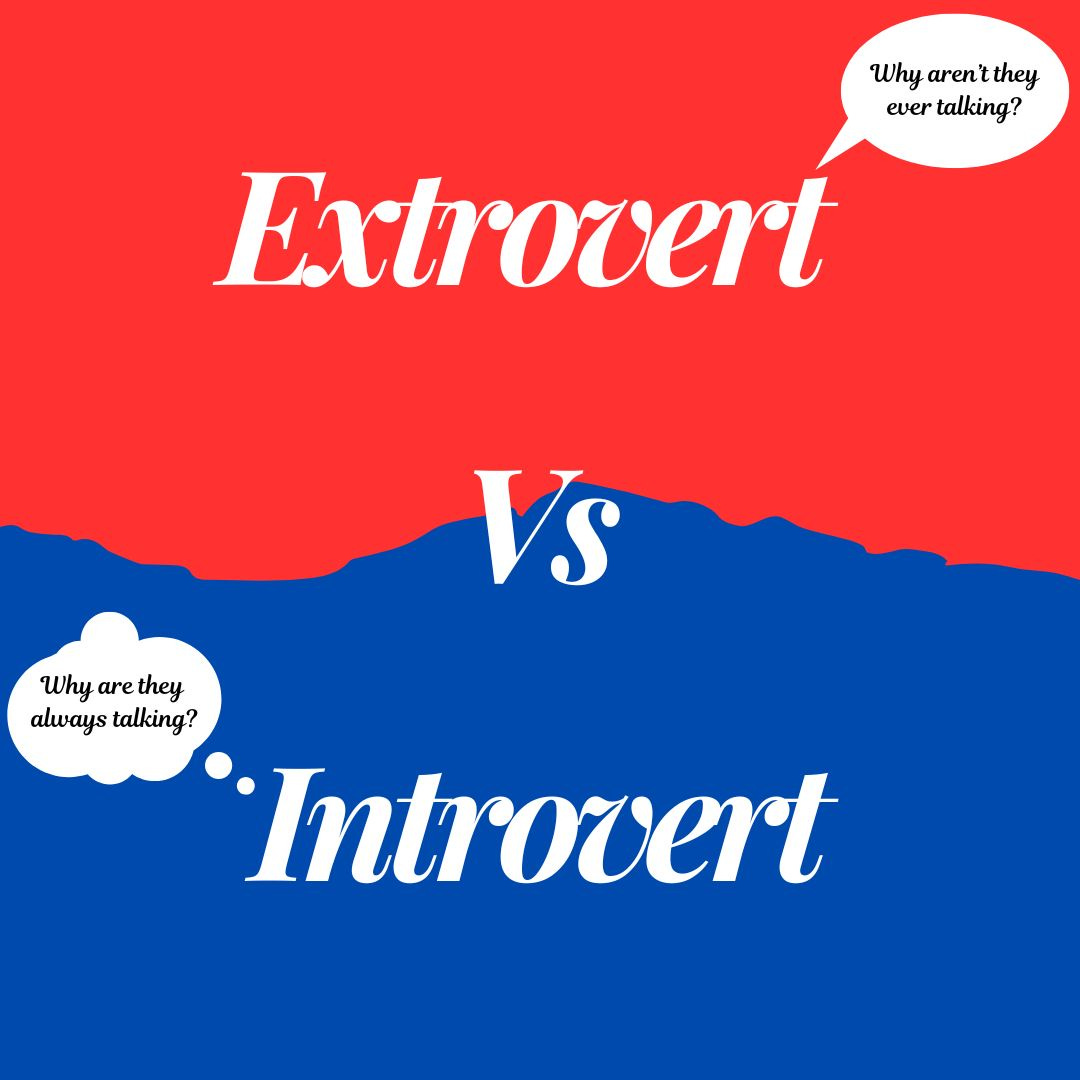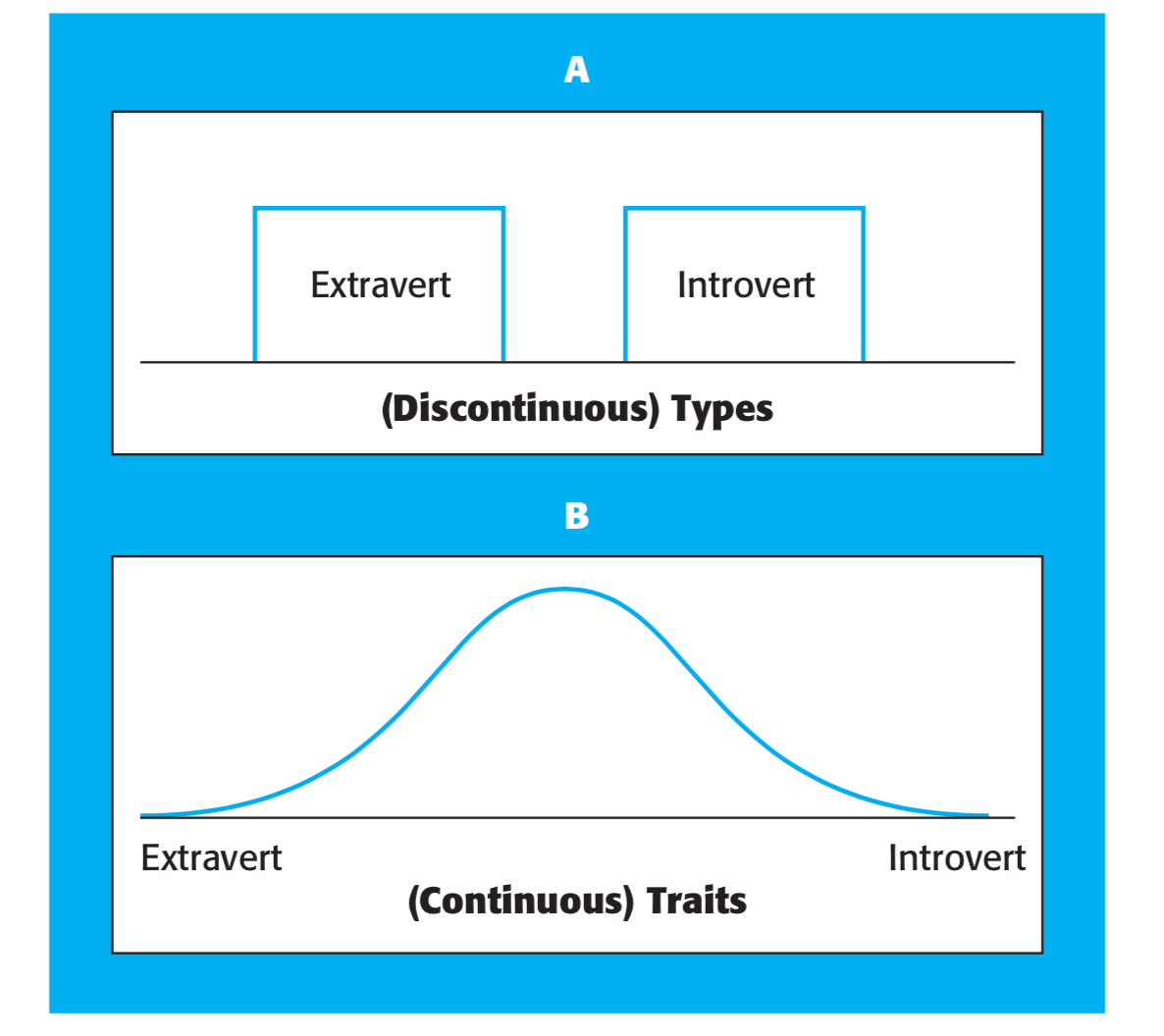The Truth Behind the Introvert vs. Extrovert Debate
A Dive into History, Science, and Misconceptions (Part 1)
Like artificial intelligence today, introversion and extroversion are simultaneously the most discussed and somehow misunderstood concepts in public discourse. When I began observing how people in person and online characterized these personality types, some problems quickly emerged.
In person, confident or charismatic people are quickly labelled extroverts while people with more creative or solitary hobbies are classified as introverts. On the internet, extroverts are portrayed as talkative neanderthals who somehow manage to be social butterflies. In contrast, introverts are misunderstood shut-ins who tend to be profound geniuses.
These evaluations are then used to corral people into camps. With one side denigrating the other personality type and bolstering the perceived benefits of theirs. But there are a few problems. Depending on the person, location or circumstance any personality trait can embody any of the above behaviours. More importantly, one’s outward expressions do not always portray their inward nature.
One’s outward expressions do not always portray their inward nature.

These snap and inconsistent judgments clearly reflect people's natural tendency to assess others quickly (and often negatively). But focusing on the internet’s response let me know there was a deeper issue. People weren’t only making snap judgments on introversion-extroversion but also fundamentally misunderstanding their characteristics. So I planned to do a little research for a week or two and share my findings - that was two months ago.
Instead, I did exhaustive research using academic and general sources on extroversion and introversion. In addition, I consulted a few friends majoring in psychology to help verify the key aspects of my research. I came to a much deeper understanding of what the traits were and want to share that.
To understand we have to dive into the history of these traits and re-surface on the other side with our modern understanding of it.

A Brief History of Introversion-Extroversion
To some extent, people throughout history have always felt what extroversion and introversion were in a casual sense. Some have always been more outgoing and others more reserved in social settings. However, this identification with only the social aspect of the trait simplifies it.
The eminent psychologist Carl Jung introduced this terminology to the public to describe what he saw as two different types of people: extroverts who focus more on the outer world and introverts who focus more on their inner world.
He acknowledged that the behaviour was more complex. However, he did not believe it to be on a spectrum (he is often misquoted on this). Jung and psychologists of his ilk believed that no one is a "pure introvert" or "pure extrovert." Instead, they claimed people exhibit a mix of these traits under different function types.
This framework inspired the development of the Myers-Briggs type indicator, which features the introversion-extroversion trait as a main divide. Despite the framework’s popularity in business and interpersonal settings today, it has little to no scientific validity.
Strictly speaking, there are no introverts and extroverts pure and simple, but only introverted and extroverted function types, such as thinking types, sensation types, etc - Carl Jung
To the wider field of psychology, Gerard Heymanns more accurately described personality traits like extroversion as a spectrum rather than a type that describes different people. He was one of the first in the field to research personality under a more scientific lens, i.e., hypotheses and experiments.
Gordon Allport and Henry Odbert conducted a comprehensive study in which they examined Webster's New International Dictionary and identified 17,953 terms related to personality traits. Raymond Cattell analyzed these terms further to break them down into 16 Personality Factors. Within this framework, Cattell identified extraversion as comprising five primary traits: warmth, liveliness, social boldness, self-reliance, and privateness.
Building on this, the trait was further formalized under the influence of Hans Eysenck in his 3-factor model of personality. Core to it was an extroversion-introversion dimension. He described extroverts as outgoing, talkative, free-spirited and impulsive while introverts were quiet, reserved, and introspective.
His personality model was one of the first to insist that personality traits were based on individual biological differences. He specifically hypothesized that these differences were based on an individual’s underlying brain functions. This established the basis for studying extroversion under a more biological and neuroscientific lens.
Eventually, parts of the field built on Eysenck’s model, creating different sets of factors to describe personality. The most established and accepted of these was developed by Paul T. Costa Jr and Robert R. McCrae and is termed the “Five Factor Model” (FFM). It consists of openness, conscientiousness, extroversion, agreeableness, and neuroticism.
It is on this personality theory that most of our modern understanding of extroversion comes from.

What It Means
Despite the mountains of research done, numerous definitions of extroversion seem to exist. I ascribe this to two factors. First, the trait is meant to encompass numerous more specific sub-traits. Second, those particular sub-traits are still disputed and vary according to models.
After going through all the literature, I understood why people go with incorrect or broad definitions. However, it was obvious that the popular understanding of extroverts as people who gain energy from social interactions and introverts who gain energy from being alone is oversimplified.
…the popular understanding of extroverts as people who gain energy from social interactions and introverts who gain energy from being alone is oversimplified.
Sociability alone seems to be a bad descriptor of extroversion because it focuses on how the trait is externally manifested. This ignores the internal desires or mood-related aspects that drive people.

Extroversion is often referred to as extraversion in psychology (or surgency in developmental psychology). Those higher on the extraversion scale are referred to as extraverts and those lower on the scale referred to as introverts. Being lower or higher on the spectrum does not translate to being good or bad.
Below are some variations on the definitions just under the Five-factor model:
The Oxford Handbook of the Five Factor Model defined it as “a dimension of personality reflecting individual differences in the tendencies to experience and exhibit positive affect, assertive behaviour, decisive thinking, and desires for social attention.”
In the highly referenced Personality in Adulthood: A Five-factor Theory Perspective (2003, p. 49), extraversion is described as “being characterized by gregariousness, assertiveness, warmth, high levels of activity, excitement-seeking, and positive emotions”.
In the seminal paper, The Structure of Phenotypic Personality Traits, extraversion is characterized by talkativeness, assertiveness and higher sociability while introversion is characterized by silence, passivity, and lower sociability.
Between these and other definitions I came across I settled on the one from the Encyclopedia of Personality and Individual Differences. It defines extraversion as
… a higher-order dimension of personality variation encompassing individual differences in sociability, assertiveness, positive emotionality, approach tendencies, and status motivation.
In plain English, what this meant to me was that extraversion is a high-level personality trait that describes people’s variations along the lines of these smaller traits.
Sociability: tendency to seek and enjoy social interactions
Assertiveness: tendency to confidently express oneself in a direct manner
Positive Emotionality: tendency to experience positive emotions e.g. joy, enthusiasm, and excitement
Approach Tendencies: inclination to move toward positive stimuli and away from negative stimuli
Status Motivation: tendency to strive for social standing within a group.
Those lower in the spectrum on these sub-traits (not just one of them) tend to be introverts and those higher extraverts. That’s it, end of story.

These definitions were so validating because I knew the trait had to go beyond just sociability. Sure one can be social but for one to be social continuously over time and in most situations there has to be more internal desires motivating the behaviour.
So sociability and assertiveness as sub-traits did not surprise me. However, the trait being related to emotionality, approaching and status was surprising. That said one’s internal motivation towards sociability and assertiveness does make sense the more one is driven for status or more positive outcomes.
In addition, this can account for situations when an extravert is not social, i.e. when in situations where they do not see a positive outcome or need to establish status. Also, extroverts may feel motivated to do more solitary activities to achieve those ends.
An introvert on the other hand may rank lower in these tendencies but under certain situations (e.g. a hobby they deeply care about or their job) or conditions (e.g. a welcoming space) be motivated to be more assertive or social.
It’s situational. Behaviour is a function of personality and environment. However, a specific study found that environment had a noticeable but smaller effect compared to personality on sociability (broad empirical evidence is still young and mixed). Over the long term, people tend to lie closer to one side or the other of these tendencies.
Behaviour is a function of personality and environment.
To an extent, I felt like I had finally achieved a more thorough understanding of extraversion. But as soon as I was done more questions came popping into my head.
How much did extroverts and introverts differ in these traits? Are the 2 camps really so far away from each other? How much of this variation comes from nature or nurture? And if nurture is a huge component how much is the internet changing this? This is where the 2-week study morphed into a 2-month one….

Subscribe to see what I found in the next instalment of this series on the great introvert-extrovert debate.
References
Papers/Articles
Wilt, J., Revelle, W., & Northwestern University. (2008). Extraversion. In M. Leary & R. Hoyle (Eds.), Handbook of Individual Differences in Social Behavior. Guilford. https://personality-project.org/revelle/publications/wr.ext.rev2.pdf
Wilt, J., & Revelle, W. (2017). Extraversion. In T. A. Widiger (Ed.), The Oxford handbook of the Five Factor Model (pp. 57–81). Oxford University Press. https://doi.org/10.1093/oxfordhb/9780199352487.013.15
Eysenck, S. B. G., & Eysenck, H. J. (1968). The Measurement of Psychoticism: a Study of Factor Stability and Reliability. British Journal of Social and Clinical Psychology, 7(4), 286–294. https://doi.org/10.1111/j.2044-8260.1968.tb00571.x
McCrae, R. R., & Costa, P. T. (1987). Validation of the five-factor model of personality across instruments and observers. Journal of Personality and Social Psychology, 52(1), 81–90. https://psycnet.apa.org/doi/10.1037/0022-3514.52.1.81
DeYoung, C. G., Quilty, L. C., & Peterson, J. B. (2007). Between facets and domains: 10 aspects of the big five. Journal of Personality and Social Psychology, 93(5), 880–896. https://doi.org/10.1037/0022-3514.93.5.880
McCabe, K. O., & Fleeson, W. (2012). What Is Extraversion For? Integrating Trait and Motivational Perspectives and Identifying the Purpose of Extraversion. Psychological Science, 23(12), 1498–1505. https://doi.org/10.1177/0956797612444904
McCrae, R. R., & Costa, P. T. (2003). Personality in Adulthood. Personality in Adulthood: A Five-Factor Theory Perspective, 2, 20–34. https://doi.org/10.4324/9780203428412
Zeigler-Hill, V., & Shackelford, T. K. (Eds.). (2020). Encyclopedia of Personality and Individual Differences. Springer, 1514–1519. https://doi.org/10.1007/978-3-319-24612-3
Goldberg, L. R. (1993). The structure of phenotypic personality traits. American Psychologist, 48(1), 26–34. https://projects.ori.org/lrg/PDFs_papers/Goldberg.Am.Psych.1993.pdf
Breil, S. M., Geukes, K., Wilson, R. E., Nestler, S., Vazire, S., & Back, M. D. (2019). Zooming into Real-Life Extraversion – how Personality and Situation Shape Sociability in Social Interactions. Collabra Psychology, 5(1). https://doi.org/10.1525/collabra.170
Articles
Arthur, M. B. (2018, September 18). The “Strange history” behind the Myers-Briggs type indicator -- and what that can mean for you. Forbes. https://www.forbes.com/sites/michaelbarthur/2018/09/16/the-strange-history-behind-the-mbti-and-what-that-can-mean-for-career-owners/
Fundamental attribution error: What it is & how to avoid it. (2017, June 8). Business Insights Blog. https://online.hbs.edu/blog/post/the-fundamental-attribution-error
Kelland, M. D. (2019, February 18). 10.7: Paul Costa and Robert McCrae and the Five-Factor Model of Personality. Social Sci LibreTexts. https://socialsci.libretexts.org/Bookshelves/Psychology/Culture_and_Community/Personality_Theory_in_a_Cultural_Context_(Kelland)/10%3A_Trait_Theories_of_Personality/10.07%3A_Paul_Costa_and_Robert_McCrae_and_the_Five-Factor_Model_of_Personality
Shumate, C. (2015, July 15). Ambiversion: Ideal or myth?. Personality Type in Depth. https://typeindepth.org/ambiversion-ideal-or-myth/
History Reliability and Validity of the Myers-Briggs | The Myers-Briggs Company. (n.d.). Www.themyersbriggs.com; The Myers Briggs Company. https://www.themyersbriggs.com/en-US/Support/Validity-of-the-Myers-Briggs-assessment



